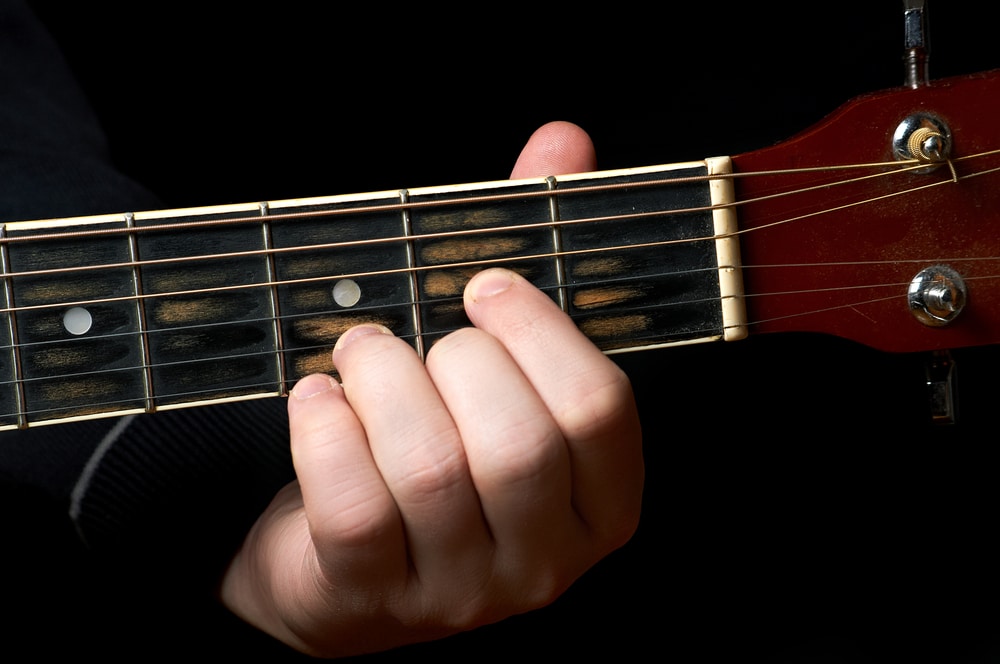
Travis Picking
Travis Picking in D
Travis picking in D requires a slightly different, “reverse” thumb approach to chords like G and C. Learn it now!
Most people start travis picking with chords like G, C, E or A. But how do you pick a travis pick with the D chord? You need to play bass notes first on the 4th string then on lower strings (e.g. 5th).
Let’s take a look at this with a few musical examples. As always, listen to the examples and then try to keep along with the tab, first to the slow audio and then the faster one.
Travis Picking in D Example 1 - simple arpeggio
This example is the easiest possible travis picking pattern in D.
We play an arpeggio (each string of the chord individually) and the first note of each bar is the open D string then open A string (then repeat).
This will feel a bit odd at first. We are used to the thumb going the other way when we do Travis picking on a G or C chord. Go nice and slowly.
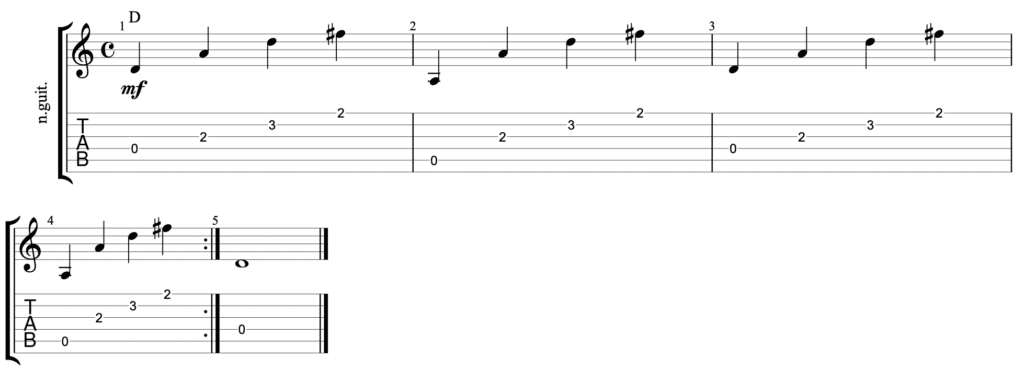
Exercise 1 Audio – Slow
Exercise 1 Audio – Fast
Travis Picking in D example 2 - modified arpeggio
This is a very similar exercise. We change the arpeggio slightly in bar 4, picking the strings in a different order.
This just gives us a slightly different challenge – with the aim being a nice steady alternate bass.
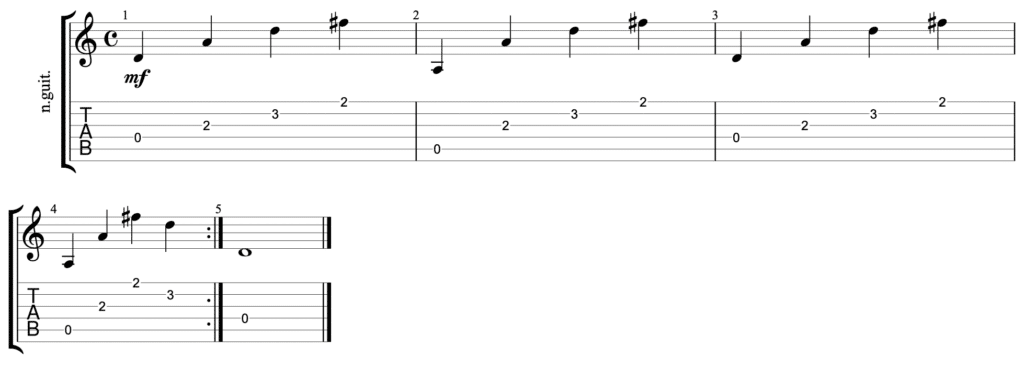
Exercise 2 Audio – Slow
Exercise 2 Audio – Fast
Travis Picking in D example 3 - changing chords
This example is a bit more involved and a bit more challenging but now with a chord change to G.
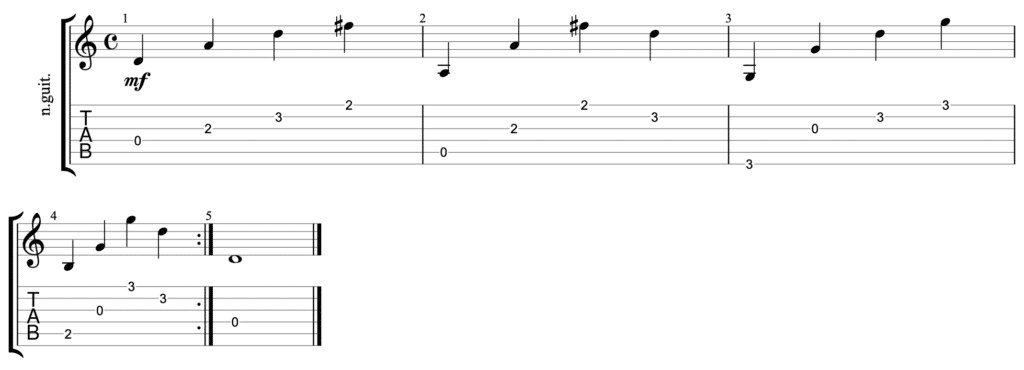
Exercise 3 Audio Slow
Exercise 3 Audio Fast
Travis Picking in D example 4 - the F# bass note
The 2nd fret of the thickest (E) string is an F# note. This is a note in the D chord so we can use it as a bass note over D.
Here we have a simple arpeggio but one of the bars uses this bass note. Try it! What do you think?
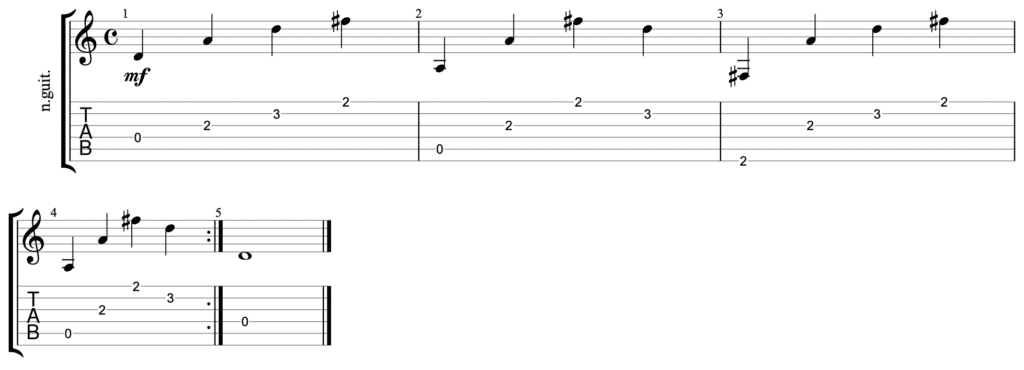
Exercise 4 Audio Slow
Exercise 4 Audio Fast
Travis Picking in D example 5 - a musical piece
This example is a nice musical example incorporating hammer-ons, pull-offs and more.
Listen first to the audio and then try to play along to the slow then the fast audio..
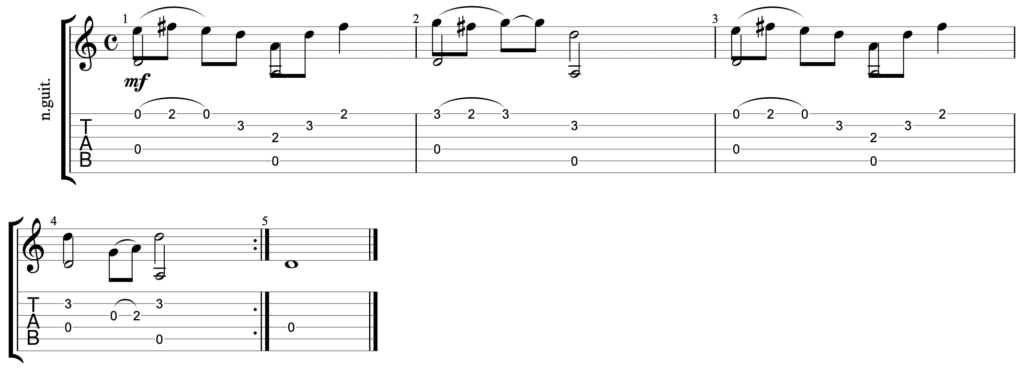
Exercise 5 Audio Slow
Exercise 5 Audio Fast
Summary
PTrying to play Travis picking in D could be viewed as something difficult or hard, but it’s a great opportunity to mix up your playing and go a bit deeper into techniques that sound great.
Once your thumb gets used to this “backwards” motion it will open up a whole new field of possibilities!